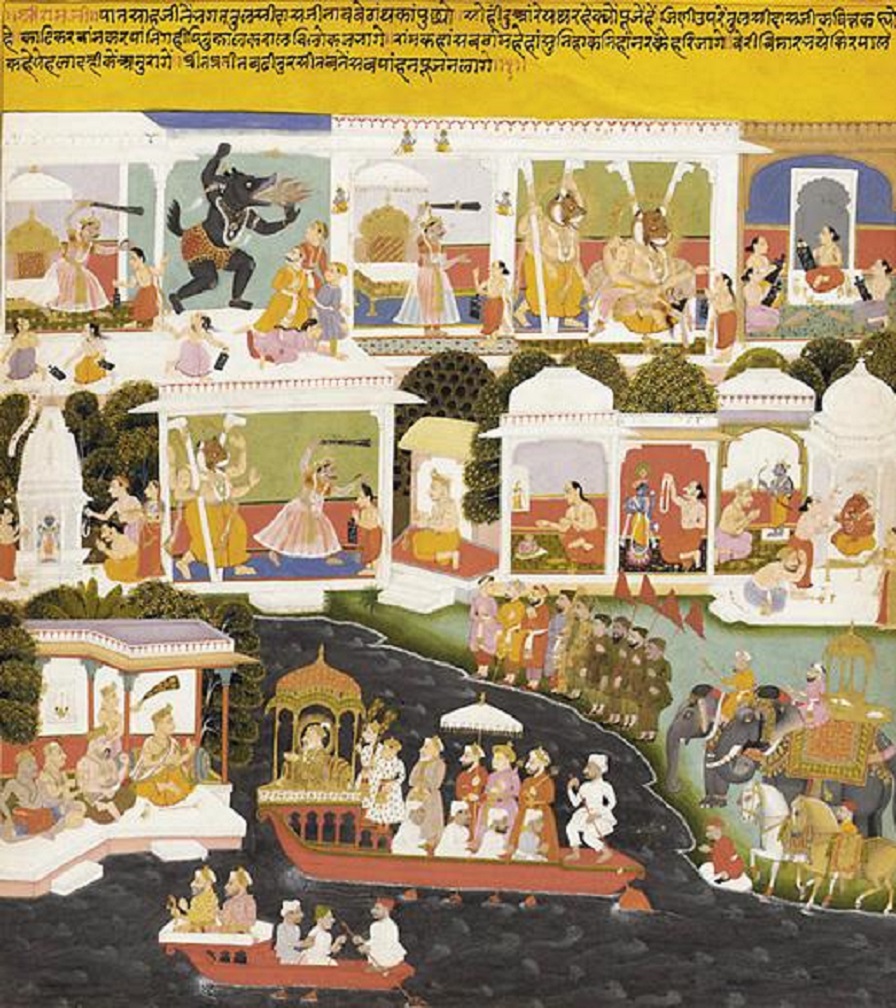Tulsi Das, poet
= Muazzam Shah Alam and Tulsi Das=
From the Facebook page of the Rare Book Society of India
A Prince visits the poet Tulsidas
ca. 1700-1710
[A miniature painting from Mewar painted furing the reign of the] Sisodia dynasty
Opaque watercolor and gold on paper
Udaipur, Mewar, India
The lower part of this painting depcits Muazzam Shah Alam, a Mughal prince, visiting Tulsidas, the poet and saint who authored a 16th-century version of the Ramayana (Story of Rama). The inscription, written in a dialect of Hindi called Braj, says that the prince asked Tulsidas why Hindus worship stones. Tulsidas quoted from his poem, the Kavitavali (Necklace of Poems), which tells the story of Prahlad, a boy who worshipped Rama (a form of Vishnu) despite his father's opposition. Challenged by his father, who asked "Where is Rama?" the boy answered "He is everywhere." "Is he in this pillar?" the father asked. "Yes," the boy said. Then as depicted in the upper register, Narasimha, the man-lion form of Vishnu, jumped out and attacked the father until the boy asked him to stop. Tulsidas explained that this incident convinced people that god is everywhere, and since that time they have worshipped stones.
Source: © Smithsonian Institution
